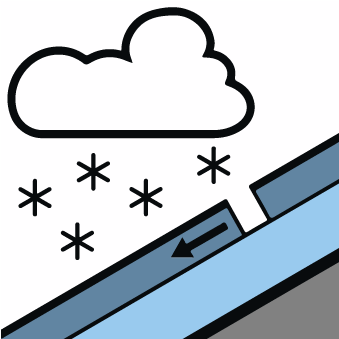
Danger level

2100m
Avalanche Problem

Wind-drifted snow

2100m


New snow

1800m


The new snow and wind slabs represent the main danger. The conditions are unfavourable for ski touring, freeriding and snowshoe hiking.
On northwest, north and northeast facing slopes easily released wind slabs formed. In many cases they are medium-sized and can be released by a single winter sport participant. The avalanche prone locations are to be found adjacent to ridgelines and in gullies and bowls above approximately 2000 m. Also near the border with Ribagorça and Pallars the avalanche prone locations are more prevalent. The avalanche-prone wind slabs are covered with new snow in some cases and therefore difficult to recognise.
In all aspects and above approximately 1800 m small and, in isolated cases, medium-sized dry avalanches are possible as a consequence of new snow and wind. These can in many places be released by people.
Backcountry touring and other off-piste activities call for extensive experience in the assessment of avalanche danger. The weather report and anticipated change in the avalanche danger are uncertain. We recommend that you consult the most recent avalanche bulletin.
In all aspects and above approximately 1800 m small and, in isolated cases, medium-sized dry avalanches are possible as a consequence of new snow and wind. These can in many places be released by people.
Backcountry touring and other off-piste activities call for extensive experience in the assessment of avalanche danger. The weather report and anticipated change in the avalanche danger are uncertain. We recommend that you consult the most recent avalanche bulletin.
Snowpack
>
Over a wide area 20 to 30 cm of snow, and even more in some localities, will fall until the early morning above approximately 1800 m. The fresh and older wind slabs are lying on unfavourable layers on wind-protected shady slopes and at intermediate and high altitudes. Released avalanches and field observations confirm the favourable bonding of the snowpack.
The old snowpack remains well bonded on sunny slopes.
Above approximately 2000 m there are 100 to 200 cm of snow. At high altitudes and in high Alpine regions snow depths vary greatly, depending on the infuence of the wind.
The old snowpack remains well bonded on sunny slopes.
Above approximately 2000 m there are 100 to 200 cm of snow. At high altitudes and in high Alpine regions snow depths vary greatly, depending on the infuence of the wind.
Tendency
Hardly any increase in danger of dry avalanches as a consequence of the new snow.